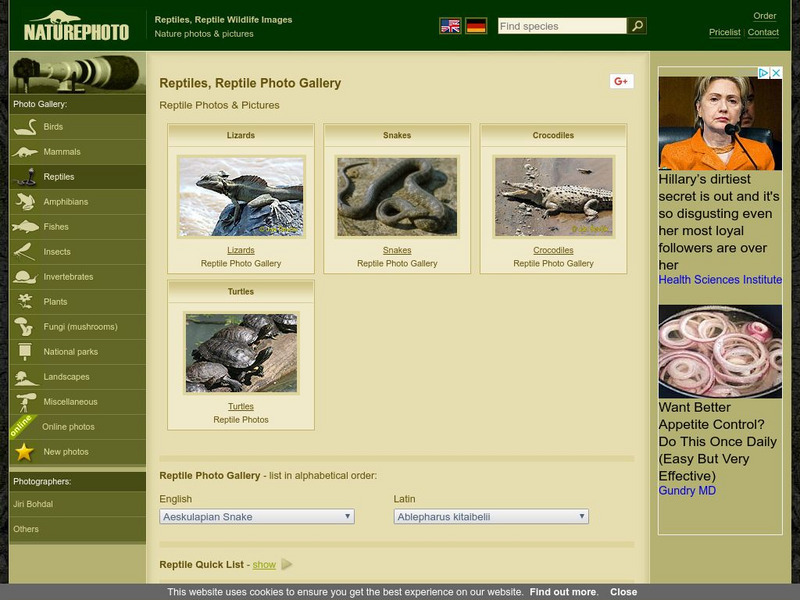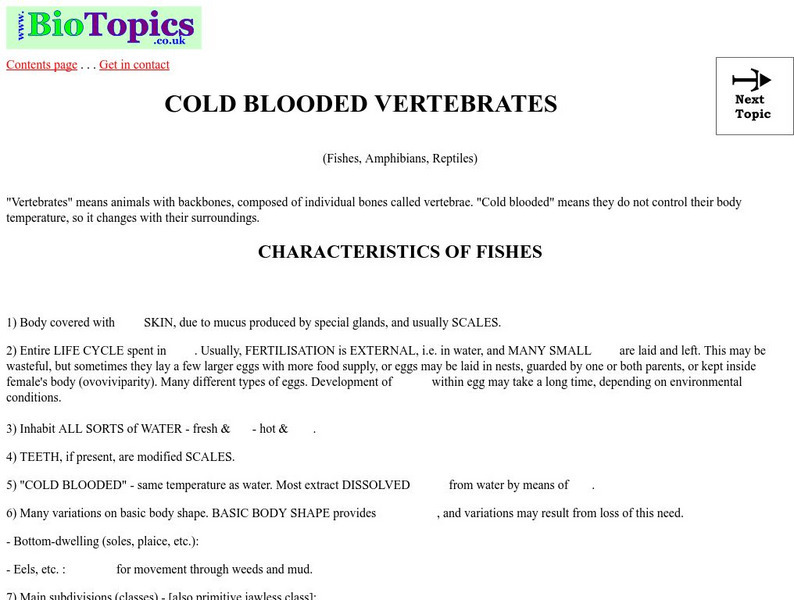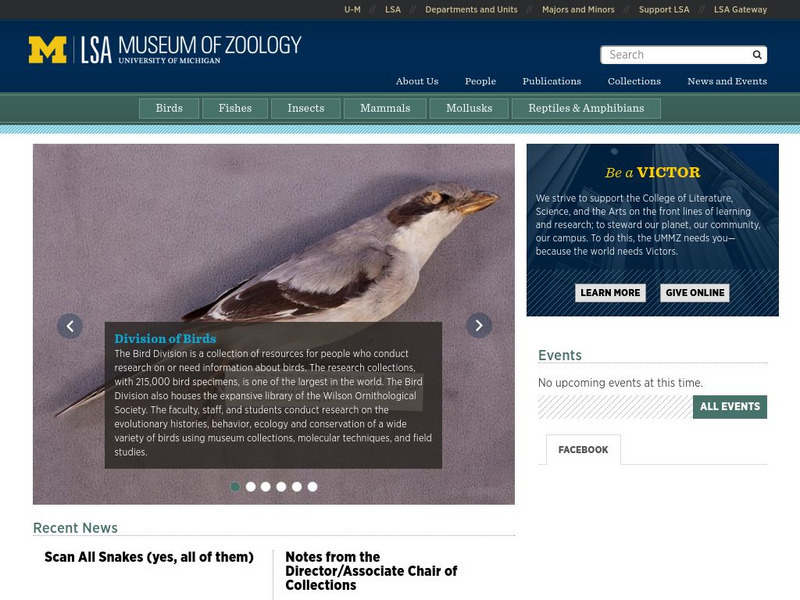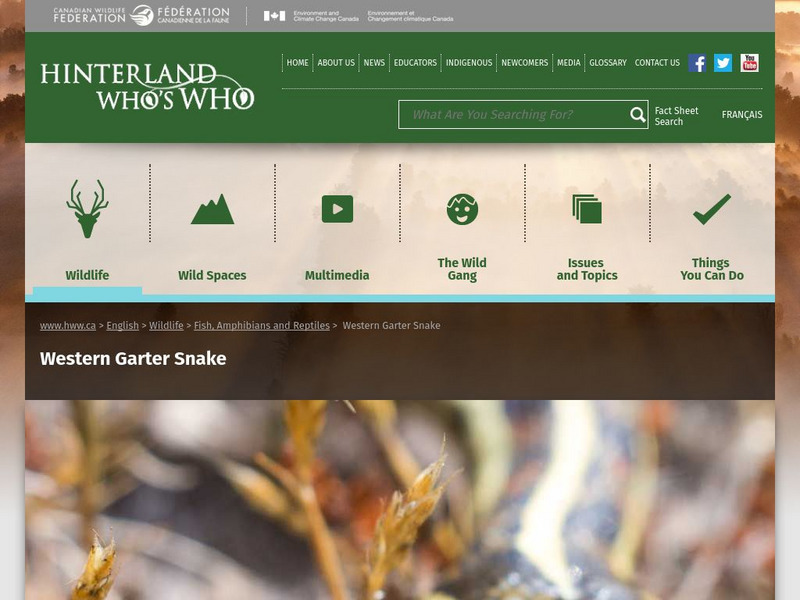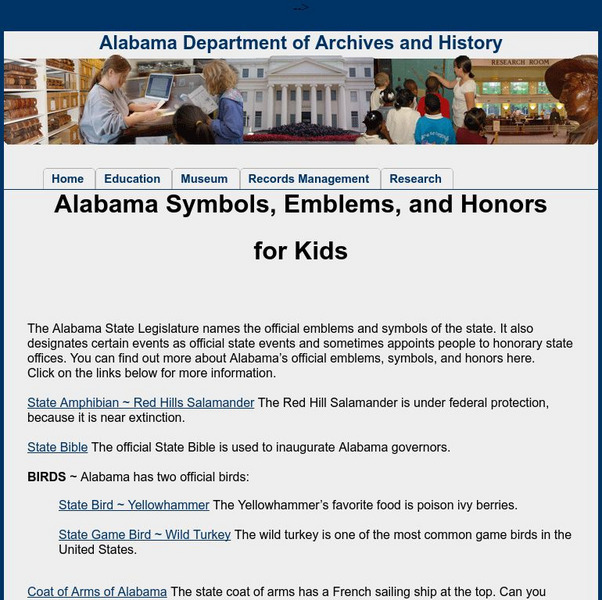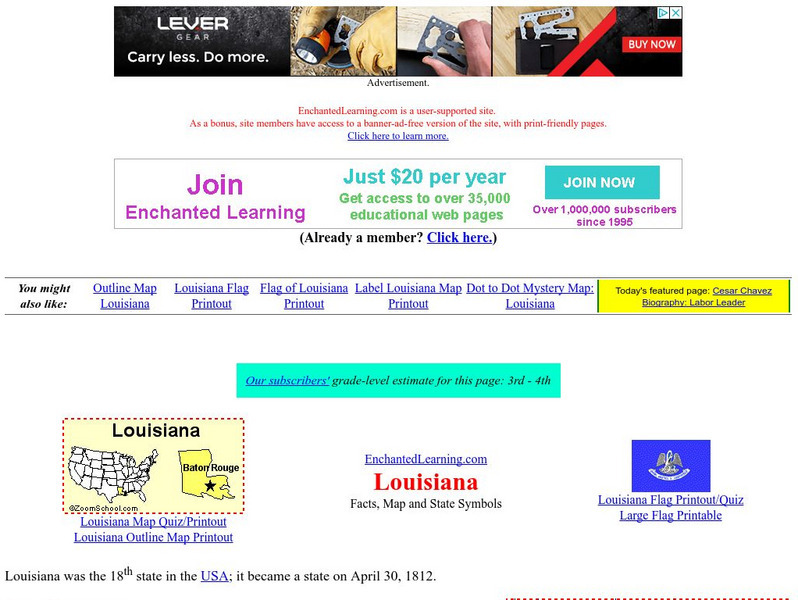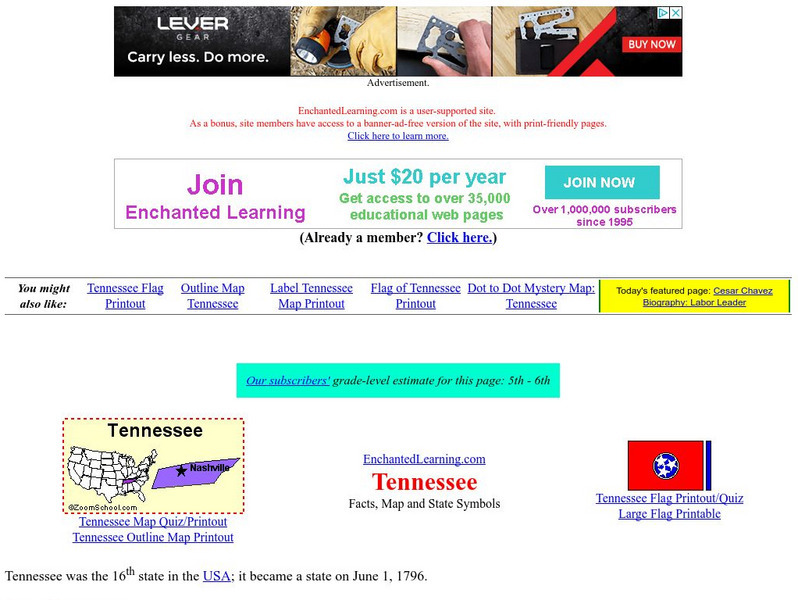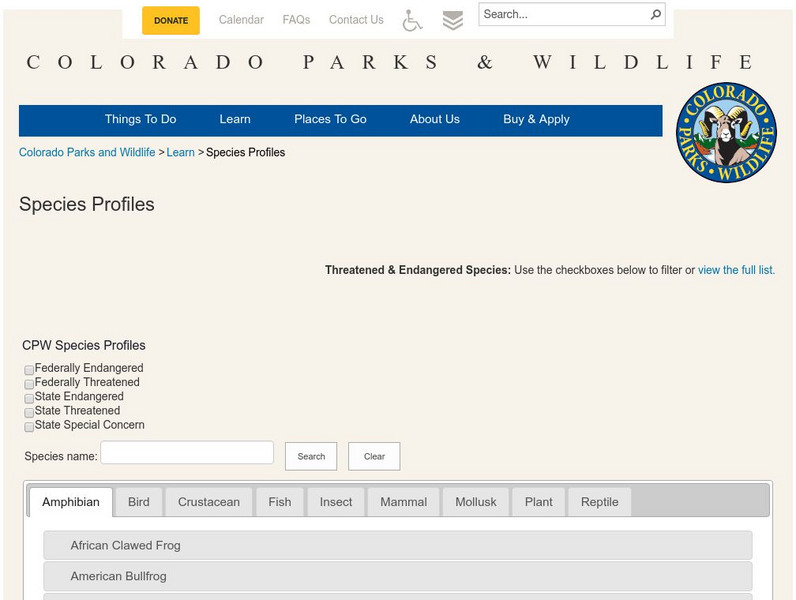Natural History Museum
Natural History Museum: Reptiles, Amphibians and Fishes
This online exhibit from the Natural History Museum branches out in many fields to cover the broad topics of reptiles, amphibians and fishes. Thirteen subtopics are provided including several videos and informative articles.
University of Florida
Florida Museum of Natural History: Animals 1: Fur, Fins, Feathers, and More
This teacher's guide focuses on familiar animals such as mammals, birds, reptiles, amphibians, and fish.
Smithsonian Institution
Smithsonian National Zoo
Here is the National Zoological Park right at our fingertips. Students will find many things to explore at this colorful and engaging site. Any study of animals will have a successful start here. Chances are students can catch their...
CK-12 Foundation
Ck 12: Third Grade Science: Life Sci: Animal Characteristics and Classification
[Free Registration/Login may be required to access all resource tools.] Presents an overview of the major animals groups (mammals, birds, reptiles, amphibians, fish, arthropods, vertebrates, invertebrates, those having live births and...
Canadian Wildlife Federation
Hinterland Who's Who: Atlantic Whitefish
Get the facts about the Atlantic whitefish. Besides finding a detailed description of this fish that is unique to Canada, you?ll also learn about some of its unique facts and characteristics. Also included in this Fish and Mollusc Fact...
Canadian Wildlife Federation
Hinterland Who's Who: Coho Salmon
Get the facts about coho salmon. Besides finding a detailed description of this fish that calls the Interior Fraser River watershed home, you?ll also learn about some of its unique facts and characteristics. Also included in this Fish...
Other
Florida Department of Environmental Protection: Life in a Spring
Learn all about the diverse species that live in the Florida Springs. Separate sections for fish, reptiles and amphibians, birds and mammals, insects and invertebrates, and plants.
Other
Science4 Us: Animals
In online and offline activities, students broaden their understanding of animals by learning to identify and classify animals into six categories: mammals, birds, fish, amphibians, reptiles, and invertebrates.
Bio Topics
Bio Topics: Cold Blooded Vertebrates
A worksheet regarding cold blooded vertebrates, including fishes, reptiles and amphibians.
Utah Education Network
Uen: Science Vocabulary Game
Fourth graders will play a review memory game with Utah's Grade 4 Science Standard V vocabulary words during this lesson plan. Words associated with living things and classifications of living things are included in this lesson plan.
Environmental Education for Kids
Eek!: Environmental Education for Kids
This site provides illustrations, descriptions, and species of amphibians, birds, fish, insects, invertebrates, mammals, reptiles, and endangered species.
ClassFlow
Class Flow: Animal Classification
[Free Registration/Login Required] This interactive flipchart examines characteristics of each animal family (mammals, birds, reptiles, amphibians, and fish) It contains an assessment at the end which can be used with Activotes.
Ducksters
Ducksters: Animals for Kids
Kids learn about animals including birds, reptiles, amphibians, mammals, and fish. Endangered animals for teachers.
University of Florida
Florida Museum of Natural History: Homepage
This site from the Florida Museum of Natural History gives the current events, information about the museum, exhibits and public programs, research and collections, links, etc. to the Florida Museum of Natural History.
University of Michigan
University of Michigan: Museum of Zoology
See the Museum of Zoology where visitors can explore the museum's resources.
E-learning for Kids
E Learning for Kids: Science: Caribbean Sea: How Can We Classify Animals?
Welcome to Hideaway Island where five pirates need to find crews for their ships. Join in and learn about animals with backbones.
University of Southern California
Structure of Matter: Animals
A slide show that demonstrates the development of physical structure in the animal world, moving from sponges through mammals.
Canadian Wildlife Federation
Hinterland Who's Who: Western Garter Snake
Get the facts about the western garter snake. Besides finding a detailed description of second most common snake, you'll also learn about some of its unique facts and characteristics. Also included in this Amphibian and Reptile Fact...
Yale University
Yale New Haven Teachers Institute: Animal Kingdom
Background information about all of the classes of the animal kingdom, followed by four short lesson plan outlines.
Other
Alabama Emblems, Symbols and Honors
A list of all of the state emblems and symbols for the state of Alabama. Clicking on the underlined link will bring up a picture of the symbol or emblem.
Enchanted Learning
Enchanted Learning: Louisiana
This site has a colorful display of information about Louisiana. It contains a map, pictures, a list of state symbols, and links to related information.
Enchanted Learning
Enchanted Learning: Tennessee
This site has a colorful display of information about Tennessee. It contains a map, pictures, a list of state symbols, and links to related information.
Other
Colorado Division of Wildlife: Colorado Wildlife Species and Profiles
This resource provides a list of species found in Colorado and information about them.



